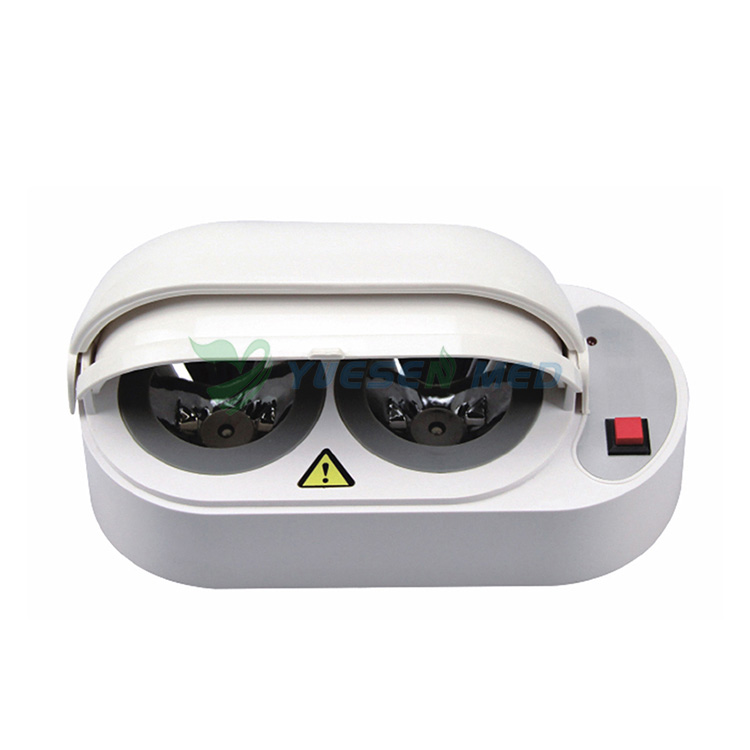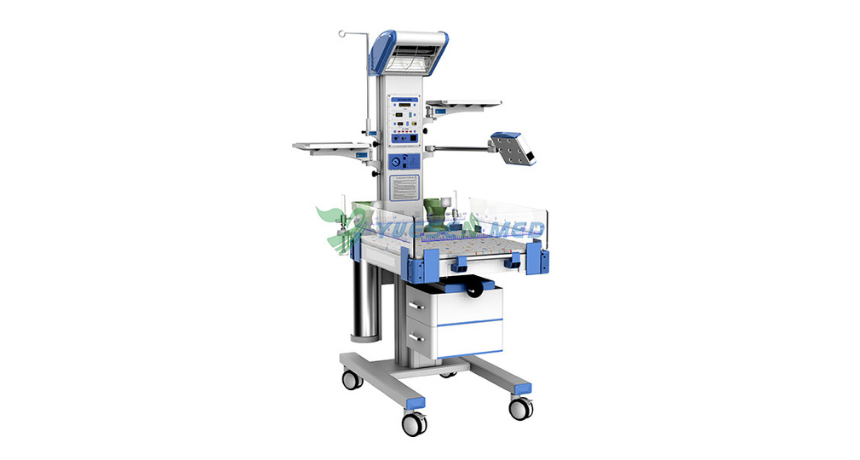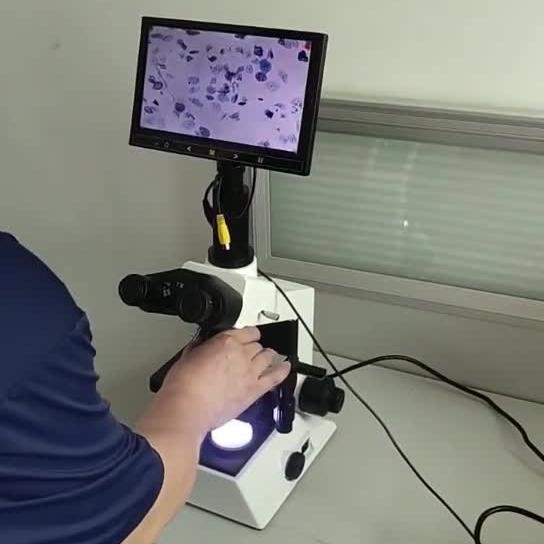Hot Products
YSX500D 50kW DR system set up and put into service in Cambodia.
YSENMED YSX500D 50kW digital x-ray system has been successfully set up and put into service in a hospital in Cambodia.
YSX056-PE serving as a vehicle-mounted x-ray in the Philippines
YSX056-PE 5.6kW portable x-ray unit has been adapted to fit on a truck, to provide mobile x-ray examination service for remote communities in the Philippines.
X Ray Machine To Zimbabwe
x ray machine, 50KW x ray machine
Microscope To Malawi
Achromatic objectives: 4X、10X、40X(S), 100X(S、Oil) Wide field eyepiece: WF10X(WF16X for option) Eyepiece head: Sliding binocular head inclined at 45° Stage: Double layer mechanical stage size 140X140mm, moving range 75X45mm Focusing: Coaxial coarse and
No More Squinting and Straining: The Medical Ophthalmic Photochromic Lens Tester Adapts to Your Needs
Views : 1785
Update time : 2024-05-31 14:07:00
Introduction
Navigating the world with less-than-perfect vision can be a constant challenge, from squinting to read road signs to straining to see clearly in bright sunlight. But what if there was a solution that could adapt to your unique visual needs, providing you with crystal-clear sight no matter the lighting conditions? Enter the revolutionary medical ophthalmic photochromic lens tester – a game-changer in the world of vision correction.

Understanding Photochromic Lenses
Photochromic lenses are a type of eyeglass lens that automatically adjust their tint in response to changes in UV light exposure. When you're indoors or in low-light conditions, the lenses remain clear, allowing maximum light transmission for optimal vision. But step outside, and the lenses instantly darken, protecting your eyes from the harsh glare of the sun. This adaptive technology is a godsend for those who struggle with light sensitivity or who need to transition seamlessly between indoor and outdoor environments.
The Role of the Ophthalmic Photochromic Lens Tester
While photochromic lenses offer a convenient solution, finding the perfect pair can be a daunting task. That's where the medical ophthalmic photochromic lens tester comes into play. This specialized device is designed to assess the performance of photochromic lenses, ensuring they meet the unique needs of each individual patient.
Precision Measurements
At the heart of the ophthalmic photochromic lens tester lies a sophisticated array of sensors and measuring instruments. These instruments meticulously analyze the lens's tint and clarity under varying light conditions, providing a comprehensive assessment of its performance. From the speed at which the lenses darken in bright light to their ability to maintain clarity in low-light settings, the tester leaves no stone unturned.
Customizable Settings
One of the standout features of the ophthalmic photochromic lens tester is its customizable settings. Unlike generic testing equipment, this device can be tailored to the specific needs and preferences of each patient. Whether you're someone who spends a lot of time outdoors or someone who is particularly sensitive to glare, the tester can be adjusted to mimic your real-world environments, ensuring the lenses you choose are a perfect fit.
Comprehensive Reporting
After the testing is complete, the ophthalmic photochromic lens tester generates a comprehensive report detailing the performance of the lenses. This report includes detailed metrics on the lenses' tint and clarity, as well as recommendations on the best lens options to suit your individual vision needs. With this information in hand, you can make an informed decision on the perfect photochromic lenses for your lifestyle.
The Benefits of Photochromic Lenses
Photochromic lenses offer a range of benefits that make them a popular choice among eyeglass wearers. Here are just a few of the advantages:
1. Adaptability: As mentioned, photochromic lenses automatically adjust their tint to match the lighting conditions, providing you with optimal vision in any environment.
2. Glare Reduction: The darkening of the lenses in bright light helps to reduce the harmful effects of glare, which can cause eye strain and fatigue.
3. UV Protection: Photochromic lenses block harmful UV rays, safeguarding your eyes from the damaging effects of prolonged exposure to sunlight.
4. Convenience: With photochromic lenses, you no longer need to carry around a separate pair of sunglasses or deal with the hassle of switching between lenses.
5. Improved Visual Comfort: By reducing eye strain and providing clear, comfortable vision in various lighting conditions, photochromic lenses can enhance your overall visual experience.
The Role of the Optometrist
When it comes to finding the perfect photochromic lenses, the expertise of an optometrist is invaluable. These eye care professionals are trained to assess your unique vision needs and recommend the best lenses to suit your lifestyle. They'll work closely with you to understand your daily activities, lighting conditions, and any specific vision challenges you may face.
During the comprehensive eye exam, the optometrist will use the ophthalmic photochromic lens tester to evaluate the performance of various lens options. They'll take into account factors such as your prescription, lens material, and frame size to ensure a perfect fit. With their guidance, you can be confident that the photochromic lenses you choose will provide you with the optimal balance of visual clarity, comfort, and protection.
The Importance of Regular Eye Exams
Regular eye exams are essential, not only for maintaining your overall eye health but also for ensuring that your photochromic lenses continue to meet your needs. Over time, your vision and light sensitivity can change, and the lenses that once worked perfectly for you may no longer be the best fit.
By scheduling regular appointments with your optometrist, you can stay ahead of these changes and make necessary adjustments to your photochromic lenses. The ophthalmic photochromic lens tester will play a crucial role in this process, allowing your eye care provider to assess the performance of your current lenses and recommend any necessary updates or replacements.
Choosing the Right Photochromic Lenses
When it comes to selecting the perfect photochromic lenses, there are a few key factors to consider:
1. Lens Material: Photochromic lenses are available in a variety of materials, including plastic, polycarbonate, and high-index. Each material offers its own unique benefits in terms of durability, weight, and optical quality.
2. Tint Range: Look for lenses that offer a wide range of tint adjustment, from nearly clear indoors to deeply tinted in bright sunlight. This ensures optimal performance in all lighting conditions.
3. Transition Speed: The speed at which the lenses darken and lighten is an important consideration. Faster transition times can provide a more seamless and responsive visual experience.
4. UV Protection: Ensure that the photochromic lenses you choose offer comprehensive protection against harmful UV rays, shielding your eyes from potential long-term damage.
5. Lens Coatings: Additional coatings, such as anti-reflective or scratch-resistant treatments, can further enhance the performance and longevity of your photochromic lenses.
By working closely with your optometrist and utilizing the advanced capabilities of the ophthalmic photochromic lens tester, you can find the perfect pair of lenses that will adapt to your every visual need, from the bright glare of the midday sun to the subtle glow of a dimly lit room.
Conclusion
The medical ophthalmic photochromic lens tester is a game-changing tool that is revolutionizing the way we approach vision correction. By providing a comprehensive and customizable assessment of photochromic lens performance, this device empowers patients to make informed decisions about the lenses that will best meet their unique visual needs. With the guidance of skilled optometrists and the advanced technology of the tester, you can say goodbye to the days of squinting and straining, and embrace a world of clear, comfortable vision that adapts to your every environment. Investing in the right photochromic lenses is not just about improving your sight – it's about enhancing your overall quality of life and enjoying the freedom to explore the world without the limitations of poor vision. So why settle for anything less? Discover the transformative power of the ophthalmic photochromic lens tester and experience the difference it can make in your everyday life.
Navigating the world with less-than-perfect vision can be a constant challenge, from squinting to read road signs to straining to see clearly in bright sunlight. But what if there was a solution that could adapt to your unique visual needs, providing you with crystal-clear sight no matter the lighting conditions? Enter the revolutionary medical ophthalmic photochromic lens tester – a game-changer in the world of vision correction.

Understanding Photochromic Lenses
Photochromic lenses are a type of eyeglass lens that automatically adjust their tint in response to changes in UV light exposure. When you're indoors or in low-light conditions, the lenses remain clear, allowing maximum light transmission for optimal vision. But step outside, and the lenses instantly darken, protecting your eyes from the harsh glare of the sun. This adaptive technology is a godsend for those who struggle with light sensitivity or who need to transition seamlessly between indoor and outdoor environments.
The Role of the Ophthalmic Photochromic Lens Tester
While photochromic lenses offer a convenient solution, finding the perfect pair can be a daunting task. That's where the medical ophthalmic photochromic lens tester comes into play. This specialized device is designed to assess the performance of photochromic lenses, ensuring they meet the unique needs of each individual patient.
Precision Measurements
At the heart of the ophthalmic photochromic lens tester lies a sophisticated array of sensors and measuring instruments. These instruments meticulously analyze the lens's tint and clarity under varying light conditions, providing a comprehensive assessment of its performance. From the speed at which the lenses darken in bright light to their ability to maintain clarity in low-light settings, the tester leaves no stone unturned.
Customizable Settings
One of the standout features of the ophthalmic photochromic lens tester is its customizable settings. Unlike generic testing equipment, this device can be tailored to the specific needs and preferences of each patient. Whether you're someone who spends a lot of time outdoors or someone who is particularly sensitive to glare, the tester can be adjusted to mimic your real-world environments, ensuring the lenses you choose are a perfect fit.
Comprehensive Reporting
After the testing is complete, the ophthalmic photochromic lens tester generates a comprehensive report detailing the performance of the lenses. This report includes detailed metrics on the lenses' tint and clarity, as well as recommendations on the best lens options to suit your individual vision needs. With this information in hand, you can make an informed decision on the perfect photochromic lenses for your lifestyle.
The Benefits of Photochromic Lenses
Photochromic lenses offer a range of benefits that make them a popular choice among eyeglass wearers. Here are just a few of the advantages:
1. Adaptability: As mentioned, photochromic lenses automatically adjust their tint to match the lighting conditions, providing you with optimal vision in any environment.
2. Glare Reduction: The darkening of the lenses in bright light helps to reduce the harmful effects of glare, which can cause eye strain and fatigue.
3. UV Protection: Photochromic lenses block harmful UV rays, safeguarding your eyes from the damaging effects of prolonged exposure to sunlight.
4. Convenience: With photochromic lenses, you no longer need to carry around a separate pair of sunglasses or deal with the hassle of switching between lenses.
5. Improved Visual Comfort: By reducing eye strain and providing clear, comfortable vision in various lighting conditions, photochromic lenses can enhance your overall visual experience.
The Role of the Optometrist
When it comes to finding the perfect photochromic lenses, the expertise of an optometrist is invaluable. These eye care professionals are trained to assess your unique vision needs and recommend the best lenses to suit your lifestyle. They'll work closely with you to understand your daily activities, lighting conditions, and any specific vision challenges you may face.
During the comprehensive eye exam, the optometrist will use the ophthalmic photochromic lens tester to evaluate the performance of various lens options. They'll take into account factors such as your prescription, lens material, and frame size to ensure a perfect fit. With their guidance, you can be confident that the photochromic lenses you choose will provide you with the optimal balance of visual clarity, comfort, and protection.
The Importance of Regular Eye Exams
Regular eye exams are essential, not only for maintaining your overall eye health but also for ensuring that your photochromic lenses continue to meet your needs. Over time, your vision and light sensitivity can change, and the lenses that once worked perfectly for you may no longer be the best fit.
By scheduling regular appointments with your optometrist, you can stay ahead of these changes and make necessary adjustments to your photochromic lenses. The ophthalmic photochromic lens tester will play a crucial role in this process, allowing your eye care provider to assess the performance of your current lenses and recommend any necessary updates or replacements.
Choosing the Right Photochromic Lenses
When it comes to selecting the perfect photochromic lenses, there are a few key factors to consider:
1. Lens Material: Photochromic lenses are available in a variety of materials, including plastic, polycarbonate, and high-index. Each material offers its own unique benefits in terms of durability, weight, and optical quality.
2. Tint Range: Look for lenses that offer a wide range of tint adjustment, from nearly clear indoors to deeply tinted in bright sunlight. This ensures optimal performance in all lighting conditions.
3. Transition Speed: The speed at which the lenses darken and lighten is an important consideration. Faster transition times can provide a more seamless and responsive visual experience.
4. UV Protection: Ensure that the photochromic lenses you choose offer comprehensive protection against harmful UV rays, shielding your eyes from potential long-term damage.
5. Lens Coatings: Additional coatings, such as anti-reflective or scratch-resistant treatments, can further enhance the performance and longevity of your photochromic lenses.
By working closely with your optometrist and utilizing the advanced capabilities of the ophthalmic photochromic lens tester, you can find the perfect pair of lenses that will adapt to your every visual need, from the bright glare of the midday sun to the subtle glow of a dimly lit room.
Conclusion
The medical ophthalmic photochromic lens tester is a game-changing tool that is revolutionizing the way we approach vision correction. By providing a comprehensive and customizable assessment of photochromic lens performance, this device empowers patients to make informed decisions about the lenses that will best meet their unique visual needs. With the guidance of skilled optometrists and the advanced technology of the tester, you can say goodbye to the days of squinting and straining, and embrace a world of clear, comfortable vision that adapts to your every environment. Investing in the right photochromic lenses is not just about improving your sight – it's about enhancing your overall quality of life and enjoying the freedom to explore the world without the limitations of poor vision. So why settle for anything less? Discover the transformative power of the ophthalmic photochromic lens tester and experience the difference it can make in your everyday life.
Related News
Read More >>
 What is an Infant Radiant Warmer?
What is an Infant Radiant Warmer?
Apr .12.2025
One of the unsung heroes in neonatal care is the infant radiant warmer. But what exactly is it? Let's dive into the world of infant care and explore the ins and outs of this vital device.
 Introduction video of YSENMED YSXWJ-BX301B Digital Biological Microscope.
Introduction video of YSENMED YSXWJ-BX301B Digital Biological Microscope.
Apr .01.2025
Here we share the introduction video of YSENMED YSXWJ-BX301B Digital Biological Microscope.
 YSDR-VET320 veterinary DR & YSB-DU10V color ultrasound serving well in Kiram Veterinary Surgery in Uganda
YSDR-VET320 veterinary DR & YSB-DU10V color ultrasound serving well in Kiram Veterinary Surgery in Uganda
Mar .31.2025
Kiram Veterinary Surgery in Uganda shares the clear images they have got from YSDR-VET320 veterinary digital x-ray system and YSB-DU10V vet color ultrasound machine.
 YSENMED YSFPD-R1012C mammo flat panel detector introduced and set up in a hospital in Senegal
YSENMED YSFPD-R1012C mammo flat panel detector introduced and set up in a hospital in Senegal
Mar .30.2025
Senegalese hospital has upgraded its analog mammography x-ray system with YSFPD-R1012C mammo flat panel detector, and the images come out clear.



